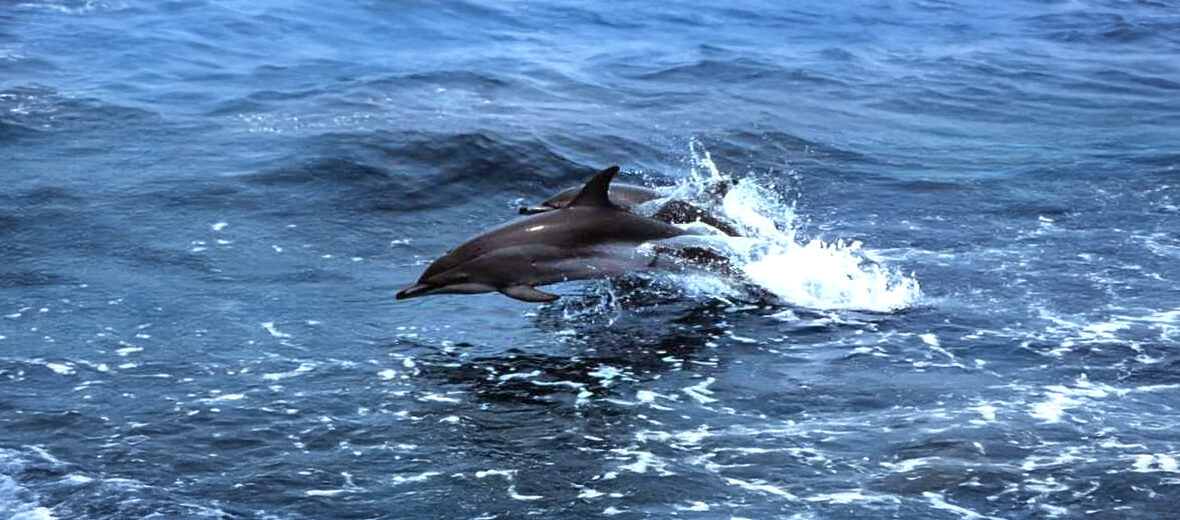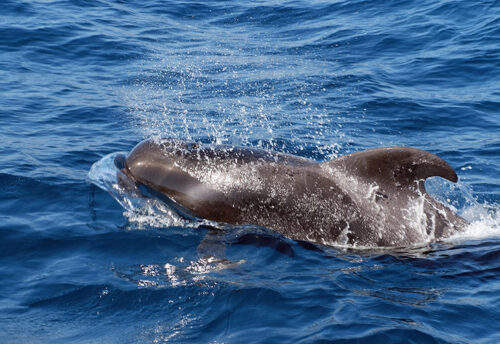
The clymene dolphin, aka short-snouted spinner dolphin, are the only known case of hybrid speciation in marine mammals, being descendants of the spinner dolphin and the striped dolphin. They can be found in the Atlantic Ocean off the coasts of Canada, United States, Mexico, Central America, South America, and Africa. These dolphins face the threats of water pollution from oil and gas drilling, overfishing, and bycatch (getting caught in long lines, fishing nets, and purse seine fishing nets. However, they are abundant enough to be listed as Least Concern by the IUCN. Their population trend is unknown at this time.
First the Stats…
Scientific name: Stenella clymene
Weight: Up to 176 lbs.
Length: Up to 6.6 feet
Lifespan: Up to 20+ years
Now on to the Facts!
1.) These dolphins were first described by John Edward Gray in 1846, although, oddly enough, he didn’t assign them their current name until 4 years later, in 1850.
2.) In 1981, Perrin et al. declared the Clymene’s existence was a separate species. Anatomical, behavioral traits, and DNA testing suggested that this species is in fact a hybrid species.
3.) While they spend most of their time in water of about 330 feet deep, they will occasionally venture into shallower waters.
4.) They feed on squid and smaller schooling fish.
5.) Cookie-cutter sharks often prey on these dolphins, as is evident by the bite wounds and scarring found on some specimens.
But wait, there’s more on the clymene dolphin!
6.) These dolphins often spin longitudinally while leaping from the water, but not as regularly as their parent species the spinners. They also partake in bow riding (riding the waves created by the bow of ships.
7.) Even though pods of up to 40 individuals are more common, pods of up to 150 can be witnessed from time to time.
Did you know…?
They can swim at speeds of up to 37 mph.
8.) Being rather vocal, they will often produce short whistles in a range of 6 – 19 kHz.
9.) The West African population of these dolphins is listed under Appendix II of the convention on the Conservation of Migratory Species of Wild Animals (CMS), since they have a less than favorable conservation status or would benefit significantly from international co-operation organized by tailored agreements.
10.) These dolphins are covered by the Memorandum of Understanding Concerning the Conservation of the Manatee and Small Cetaceans of Western Africa and Macaronesia.
Now a Short Clymene Dolphin Video!
This video talks about dolphins in general.
Be sure to share & comment below! Also, check out the Critter Science YouTube channel. Videos added regularly!
Want to suggest a critter for me to write about? Let me know here.
Some source material acquired from: Wikipedia & IUCN
Photo credit: Keith Mullin (NOAA)




